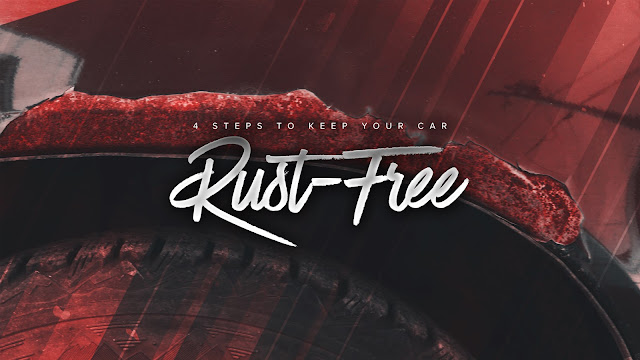Rusts on your car is not only unsightly to look at but also means your vehicle’s value drops as the damage develops. If the area affected by rust is very small, repairing it on your own is still an option. But if the rust has eaten through the metal or if the damage is extensive, you’ll need to seek professional car repair services. This way you’re guaranteed to get recommendations on how best to deal with the rust damage.
1. Wash Your Car Regularly
Driving regularly means you’re car is always getting in contact with dirt, debris and other chemicals on the road. All of these things contribute to rust formation on your car’s exterior. To prevent this, the first thing that you should be on top of is being consistent with car wash. This should be done at least once every two weeks. Don’t forget to keep your car’s drain plugs clear, otherwise this will lead to water accumulation and rust formation. If you regularly wash your car, you should see to it that you wax your vehicle at least once a month in order to provide a barrier between the metals and the water. Lastly, always clean up spills immediately. Don’t let it sit for too long or it will be harder to clean it off and will lead to rust.
2. Use Products That Prevent Rust
In addition to washing your vehicle regularly, you can have your vehicle pre-treated to help prevent rust. Have this done by the manufacturer when first buying the car. Another option is to treat suspect areas whenever you wash your car with an anti-rust spray. Look for chipped paint or areas that look like bubbles in the paint. These areas are an indication that rust has begun to corrode the part of the vehicle just under the paint. Clean the area around the bubbling or chipped paint. Allow the vehicle to dry and apply an anti-rust spray to your car to help prevent rust damage before it begins.
3. Wipe Down Car Surfaces
Yes the sun and wind can easily dry your car, but letting your vehicle dry that way will leave unsightly water marks which not only renders your hard work useless but also causes moisture to seep through and develop rust. Use a microfiber towel or preferably a weave drying towel to absorb the water and dry the car. This also applies to your car interior. Letting moisture sit for too long on any surface of the car is bound to cause damage.
4. Treat Rust Spots Early
Rust spreads if left untreated, so deal with it when the first signs appear. Don’t forget to obtain your touch-up paint from a reputable automotive parts retailer or body shop. Match it up with your car’s paint code that you will find on a placard under the hood or on the driver’s side door pillar. Sand the affected area. Scuff the surface. To further break down the affected area and prepare it for new paint, use a scuffing pad. Scuffing pads create a rough surface, which is easier for the paint to stick to. Rub the scuff pad along the path of the corroded area back and forth until the surface feels rough to the touch. Tape off areas where you don’t want the paint to get onto like the headlights. Apply primer. This is necessary if the damage have gone through the primer. Let the primer dry overnight before you begin painting. Shake the touch-up paint well to ensure that it will leave an even color deposit. Dab the touch-up paint onto the paint chip. Be light handed to make sure that just enough paint is being applied that covers all edges of the affected area. Let it dry for at least 15 minutes before you apply another layer. Be sure to use thin layers, slowing building up until the replacement paint matches the original paint. Re-apply clear coat. Ones you’ve matched the paint and have let it dry for at least 2 days you can now apply the clear coat. Replacement clear coat typically comes in an aerosol can and can be sprayed directly onto the vehicle. Wax the whole vehicle. To prevent a small section of your car from being shinier than the rest of your paint, apply a coat of wax to the whole car.
ALSO READ:


Walang komento:
Mag-post ng isang Komento